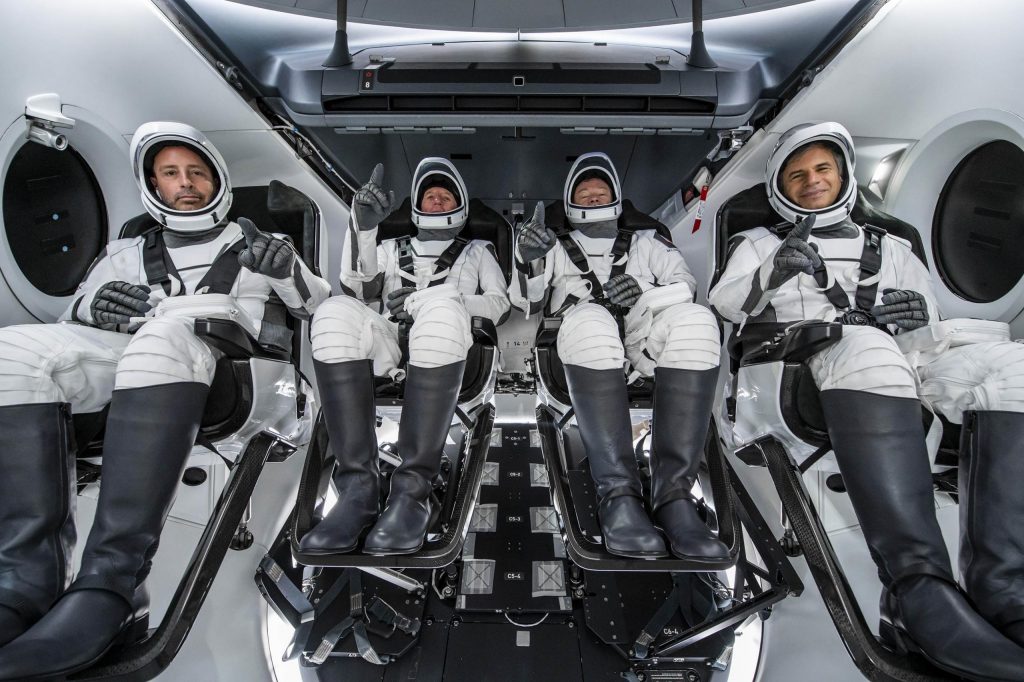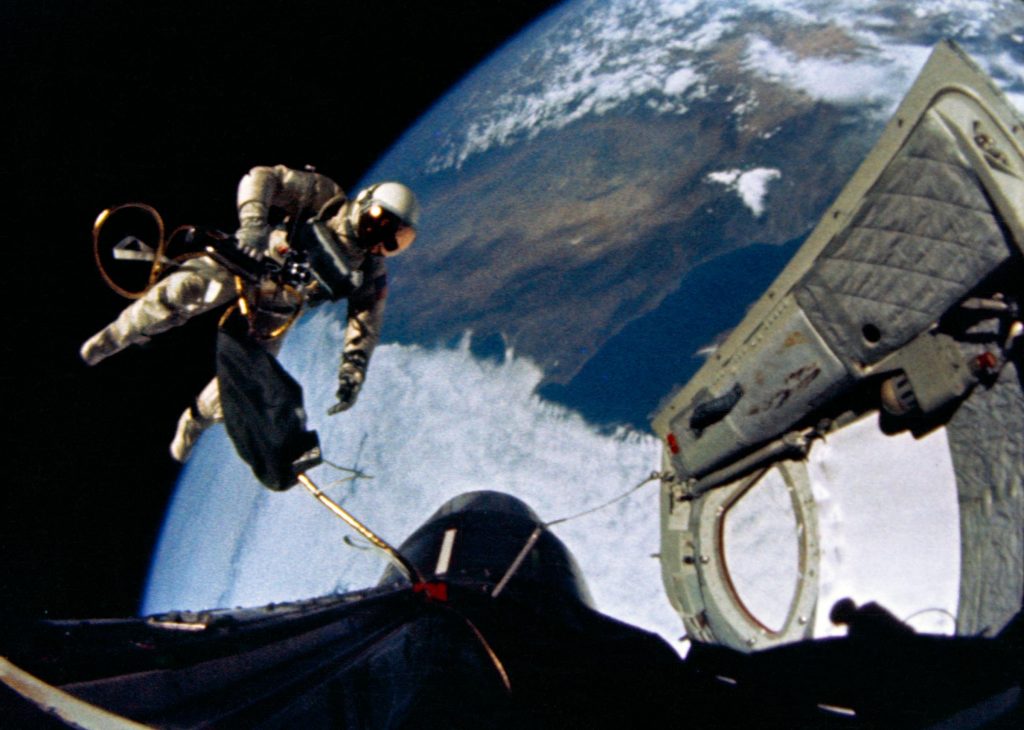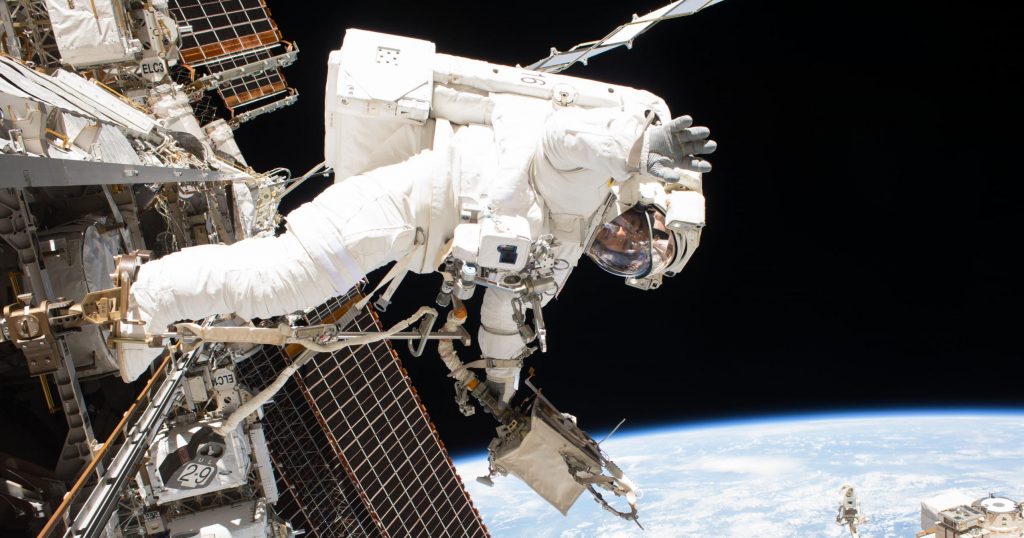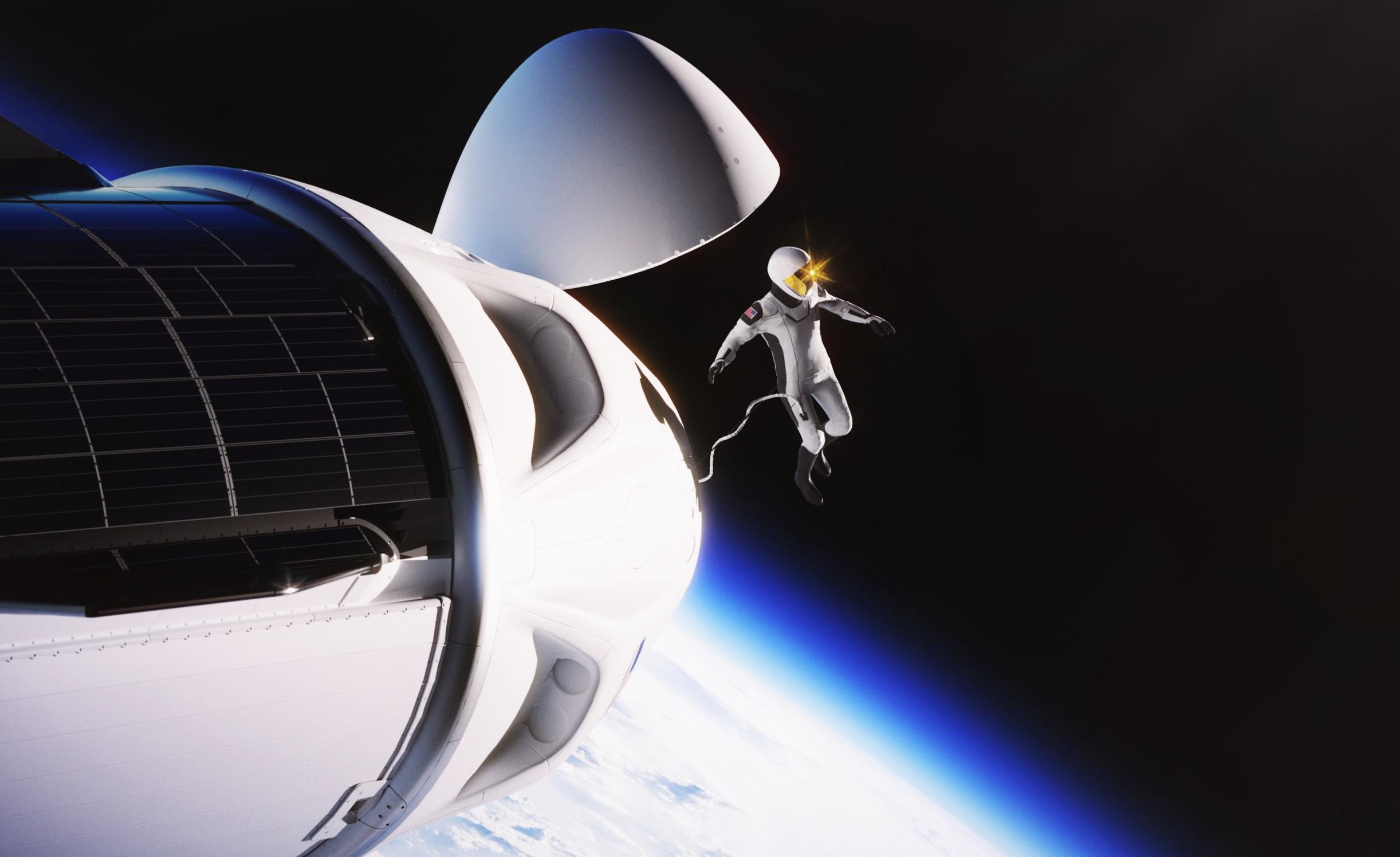Two members of the “Polaris Program” say that SpaceX could begin training private astronauts for the first private spacewalk in spaceflight history as early as May or June 2022.
Revealed earlier this year, the Polaris Program is a sort of hybridization of orbital spaceflight tourism and technology development and has one primary goal: to “rapidly advance human spaceflight capabilities.” Created in partnership with SpaceX by billionaire and Shift4 Payments founder Jared Isaacman, who also funded and flew on SpaceX’s first private Crew Dragon launch, Polaris aims to pick up where Inspiration4 left off last year.
While it will still be affiliated with and seek to help St. Jude Children’s Research Hospital, the Polaris Program will focus on the development of several crucial technologies that SpaceX will need to accomplish its ultimate goal of spreading humanity throughout our solar system.
One of those crucial technologies is a cheap, reliable, and easy-to-use spacesuit that will allow future SpaceX astronauts to work outside of the safety of their spacecraft in the vacuum of space, and, one day, walk on the surfaces of other planets and moons. For Crew Dragon, SpaceX has already developed an ‘intra-vehicular activity’ or IVA pressure suit that all Dragon astronauts must wear during mission-critical maneuvers. In the event of capsule depressurization, the suits would be able to keep Dragon astronauts alive inside the capsule for at least a few days, supplying them with clean air and maintaining enough pressure to avoid altitude sickness (or worse).
However, because IVA suits generally prioritize unpressurized mobility, the astronauts inside them can do very little when the suits are fully pressurized. At sea level, every person on Earth is subjected to standard atmospheric pressure, which amounts to about 101 kilopascals or 14.5 pounds per square inch. In a spacesuit, the suit itself must maintain a pocket of air at similar pressures, ultimately meaning that the outer skin of a suit must resist the same force. To put that into context, even operating at the absolute minimum pressures that humans can realistically tolerate and use (4-6 psi), simply moving one’s arm in an IVA suit could require hundreds of pounds or kilograms of force.

Even in NASA’s aging extra-vehicular activity (EVA) spacesuits, which feature mechanical joints and other upgrades meant to make movement and life easier inside them, spacewalks are one of the most brutal and exhausting physical activities conceivable, requiring extraordinary levels of near-constant exertion for hours on end. According to comments made to Spaceflight Now by Jared Isaacman and by pilot Scott Poteet in an interview covered by AmericaSpace, SpaceX’s first EVA suit will be quite basic. To some extent, they will be heavily modified versions of SpaceX’s existing IVA suit design, but with much more advanced thermal management, an improved helmet/visor, and – most importantly – the addition of a number of mechanized joints.


As was the case with early NASA EVA suits developed in the 1960s, SpaceX’s first EVA suits will receive consumables, power, and communications through cables (tethers) that connect to Dragon’s life support. It will take SpaceX some time to develop a miniaturized, portable life support system as safe and capable as the packs used on NASA’s EVA suits. A tethered EVA suit will still allow SpaceX or private astronauts to perform EVAs and work on or inspect the exterior of their Crew Dragon or Starship spacecraft – capabilities that could save lives in certain emergency scenarios. SpaceX’s first priority, then, will be to make sure that the basics work well in space and that the suits actually allow astronauts to perform tasks that require good finger and limb dexterity without immediately exhausting themselves.
“You’re adding lots of redundancies in the suit that don’t exist today, since it’s more last line of defense,” Isaacman said, referring to the differences between SpaceX’s current suit and the new extravehicular spacesuit. “You have a new visor, new seals, then mobility, joints everywhere for increased mobility and dexterity in the fingers and such. I think, visually, it will be more along the lines of what it currently looks like, but very much like a new suit.”
Spaceflight Now – May 10th, 2022
The first of up to three Polaris missions – Polaris Dawn – is currently scheduled to launch as early as November 2022. All four private astronauts – made up of two Polaris employees and two SpaceX employees – will wear the new EVA suits in place of their usual IVA suits, while only two members of the crew will ultimately attempt to exit the capsule and perform a single EVA that could last roughly 30-90 minutes. To do so, the entire Dragon will be depressurized and one of two hatches opened will be opened, while the the other two EVA-suited astronauts will simply remain in their seats. Regardless of the outcome, it will be the first private spacewalk in the history of spaceflight.
The astronauts training to prepare for Polaris Dawn will focus heavily on the EVA, offering either the two chosen crew members or all four candidates an opportunity to experience deep-sea diving and test EVA suits both underwater and inside a Dragon capsule simulator.
Beyond supporting SpaceX’s EVA spacesuit development, Polaris Dawn’s crew will also conduct a range of science experiments, attempt to connect to high-speed internet in orbit through Starlink laser links, and even try to break the record for the highest Earth orbit reached by a crewed spacecraft (1400 km / 870 mi).











